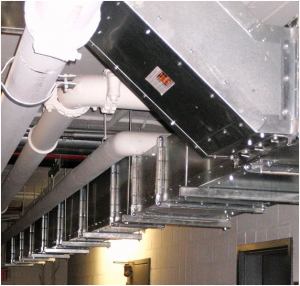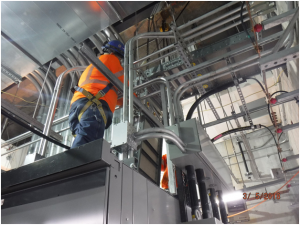A heating system for cooling or heating your home uses a collection of tubes called ducts to move the air to each room. Usually made of sheet metal, the ducts provide a solid and secure passage for air to be conditioned – heated or cooled – by heating, ventilation, and air conditioning (HVAC) equipment and then circulated throughout your home.
Air supply and return
There are two main parts of your ducting system – supply and return. Once your HVAC equipment has heated or cooled air as you have requested, it supplies it through your ducting system to outlets in the individual rooms you want to be conditioned. It also takes stale air from around your house and returns it to be conditioned by your HVAC equipment or released outside your home.
Image Credit
Maintaining your ducting
It is essential to maintain the ducting in your home, particularly where it exits and enters the building. A cat in Wimbledon found this out when it ventured into a metal duct that had not been properly maintained and got trapped for four days before being rescued by local firemen.
It is not just important to prevent unwanted visitors from entering your ducting. Typically, air duct systems lose between 25 and 40 per cent of the energy they have put into heating or cooling the air due to leaks. These leaks make the HVAC equipment work harder and give you a bigger energy bill.
Finding replacement parts, such as a new length of spiral duct, is possible through online suppliers such as dustspares.co.uk/ductwork-parts/galvanised-steel-spiral-duct.html.
The way your ducting system is designed will greatly affect the comfort of your home and also how much you pay to maintain the comfort levels. The system of ducts that extends from your heating and cooling equipment to the vents throughout your home should be designed based on calculations of the volume of air in each room and on the likely sources of particulates or pollution such as dust, pollen, mould or other fibres from each room.
You will need sufficient ducts to suck the dirty or unconditioned air out of each room, proper filters fitted to catch any pollution, and a configuration or layout pattern that most efficiently enables the clean air to be supplied and dirty air to be returned to the HVAC unit.





